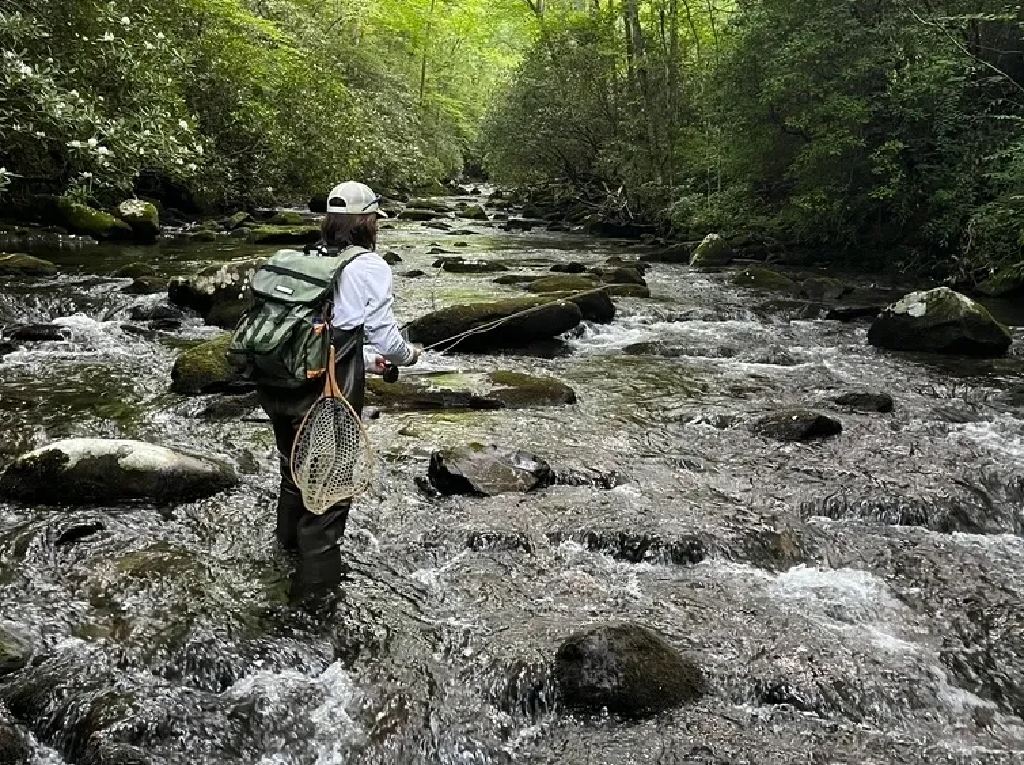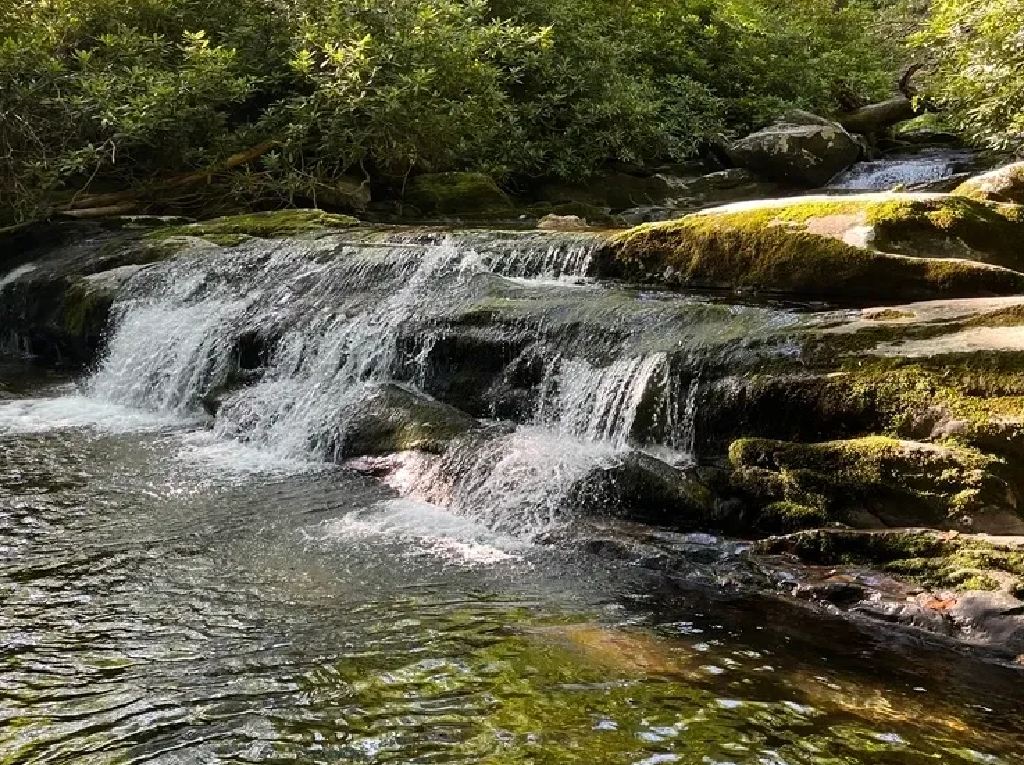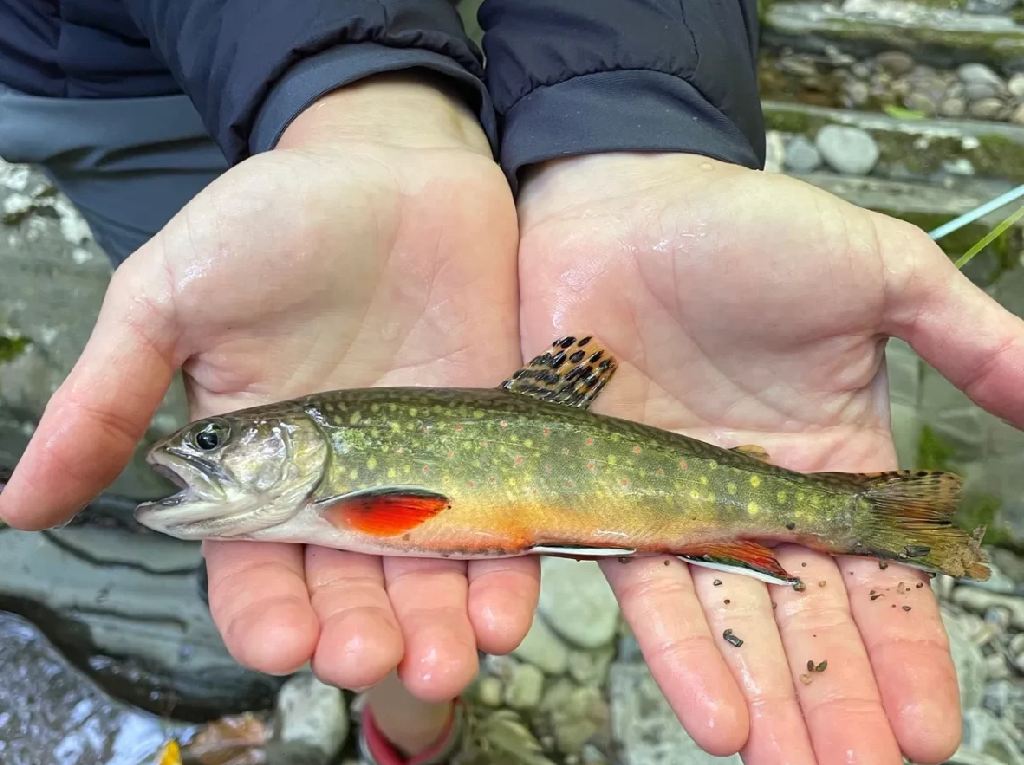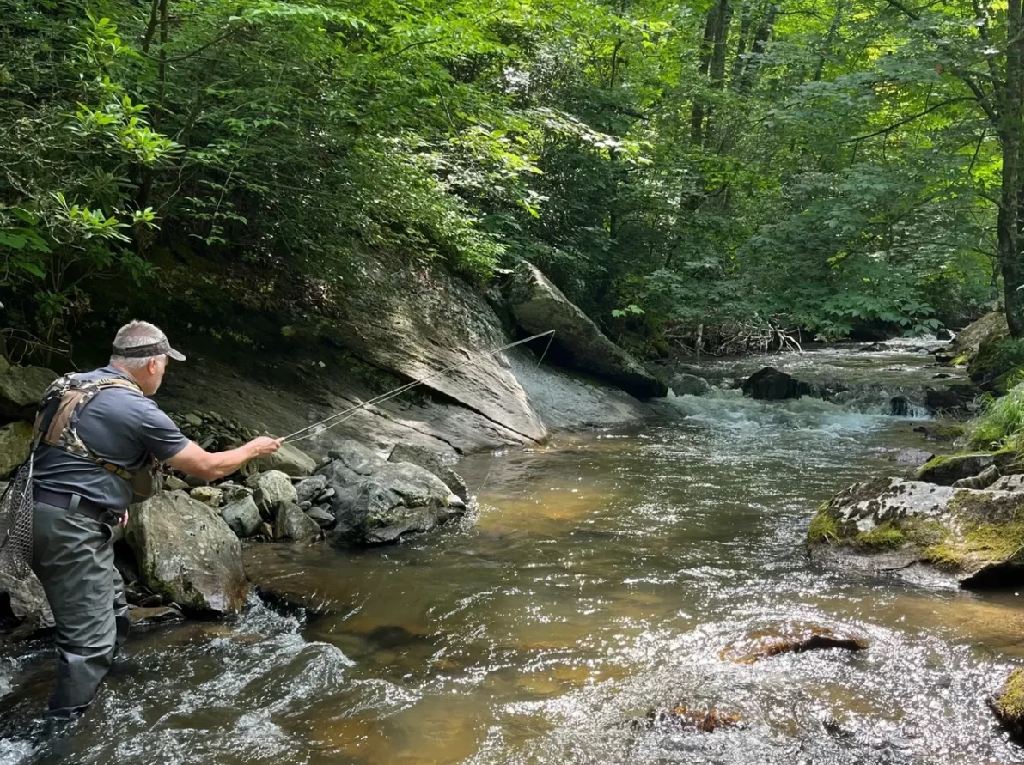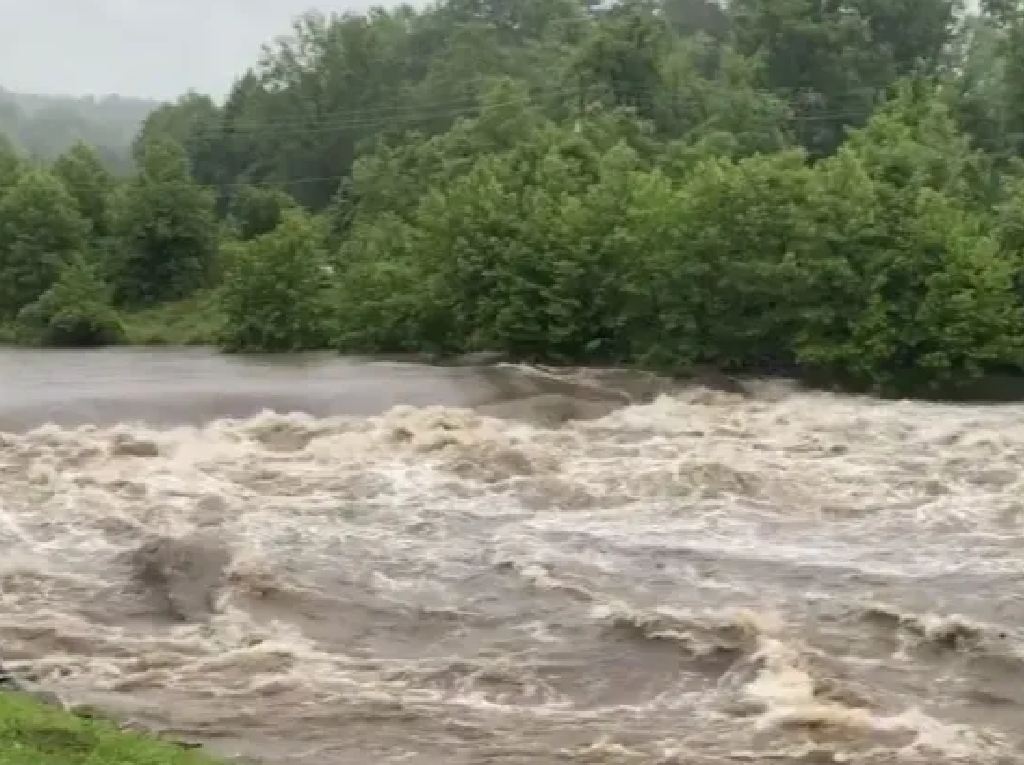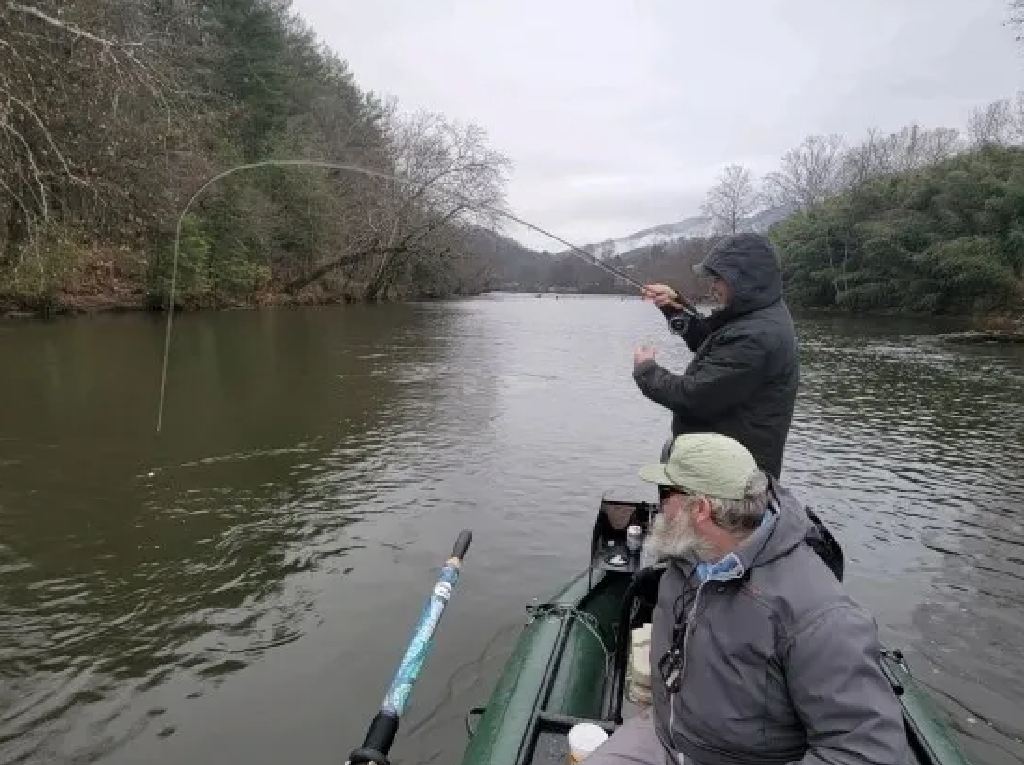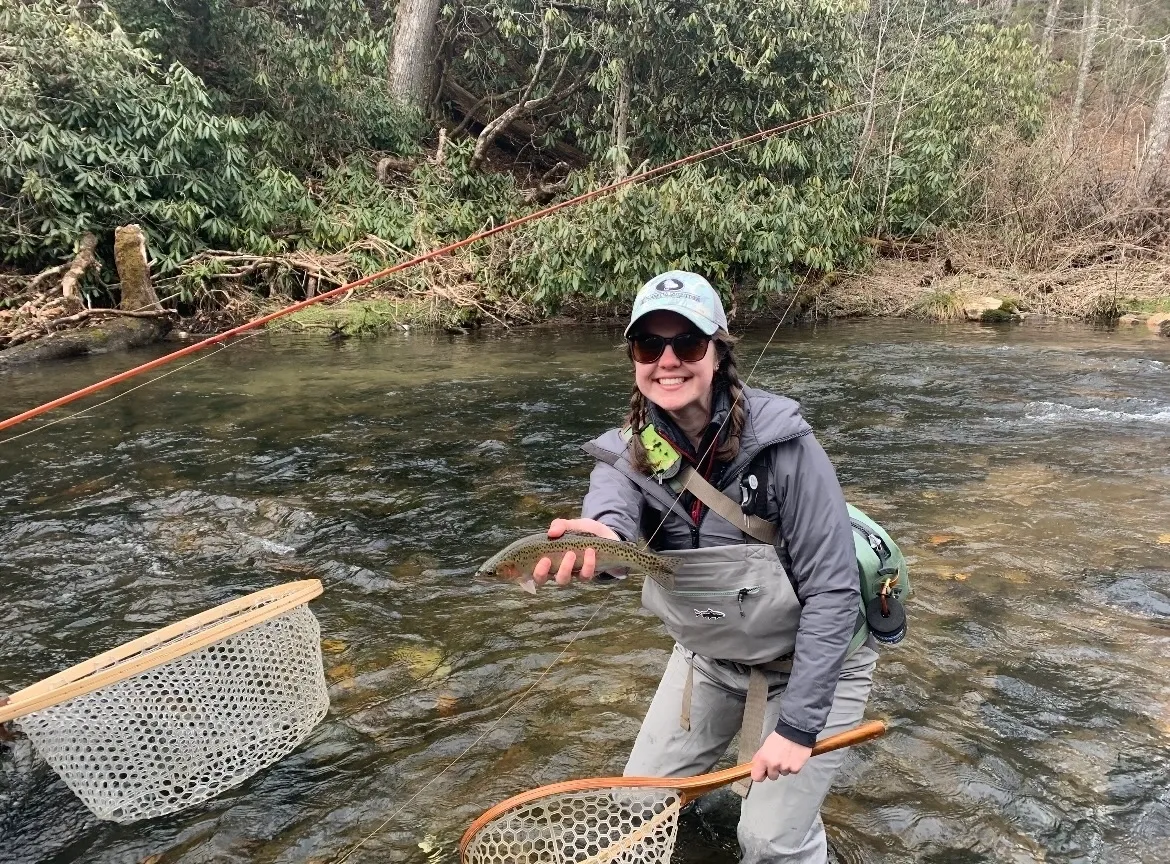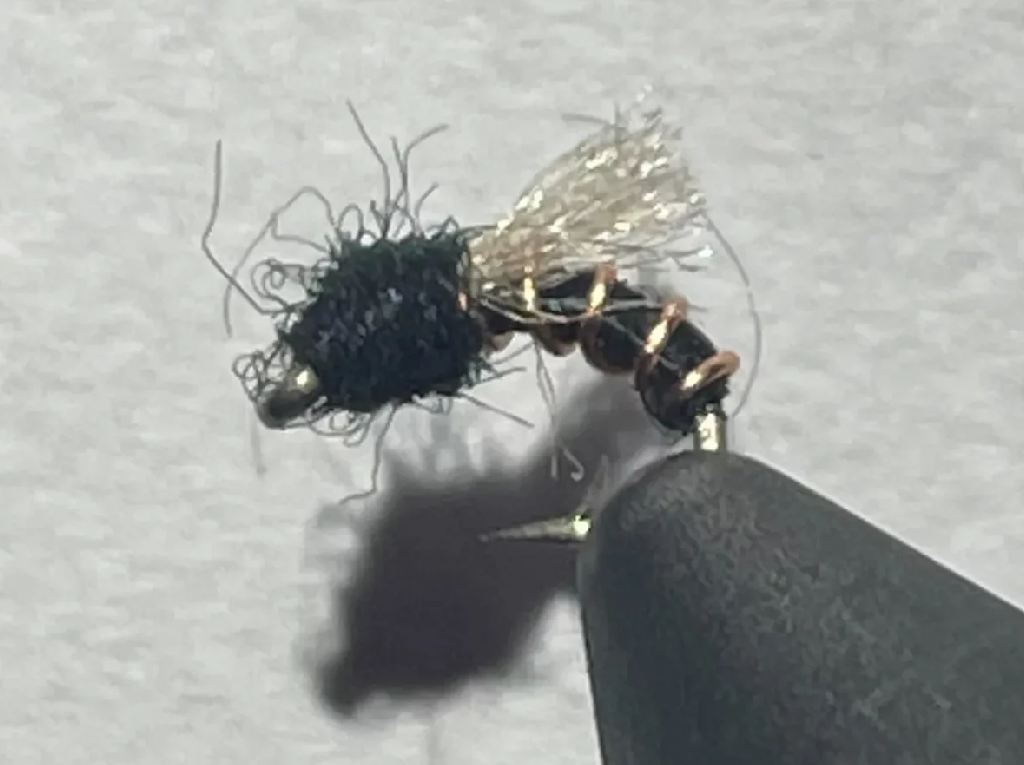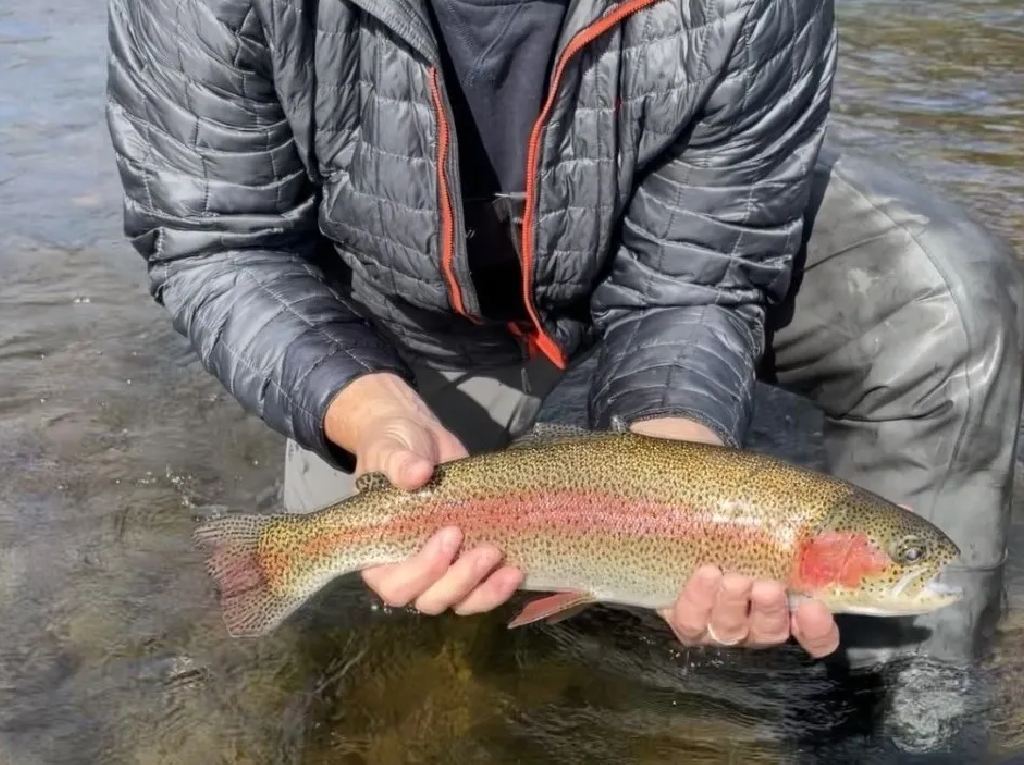The transitional period between Fall and Winter is always a roller coaster ride, especially for the fish and the ecosystems they reside in. One day the high will be in the low 40’s, and the day after will be 70. Temperature swings of 30-40 degrees between day and night are common. This week, the temps are hovering between the mid 60’s and the low 70’s during the daytime, which typically means red hot fishing in the afternoons.
Most of our freestone streams follow the trend of swinging temperatures, too, although not so drastically. The changes can pretty drastic to the fish. Many local anglers are excited to be able to sleep late since the cold evenings mean slower fishing. Below is a graph from the USGS that details the water temperatures over the last 7 days on the Oconaluftee River. It begins in the Great Smoky Mountains National Park and flows through the Cherokee Reservation. The “Luftee” has a very dramatic change in elevation from its beginning in the small headwater streams to its terminus at Oconaluftee Lake.
Our tailwater rivers, such as the Tuckasegee and the Nantahala, have much more consistent water temps which leads to more consistent fishing over the bulk of the day. If you’re an early riser and want to spend an entire day on the water, then tailwater fishing is for you. If you’re hoping to target wild trout in the higher elevations, enjoy those evening libations, sleep late, eat that decadent breakfast, and plan on having good fishing around 11am.
Let’s get to the meat and potatoes of what bugs the fish are keying in on right now-
The fish are not as picky as one would think. Presentation is key over how well a fly is tied or a particular pattern. Often times, the size of your fly can make the difference between getting skunked and having an epic day. It’s always a good idea to have a few different sizes of mayflies, caddisflies, and stoneflies. Smaller flies tend to be what the trout desire throughout the winter.
Natural patterns such as Blue Winged Olive imitations in sizes 18-22, in both dries and nymphs are always a good bet. The fish will really key in on the emerging mayflies, so if you see the fish dimpling the surface and not fully nosing out of the surface, emergers are on the menu. I prefer to fish Parachute Adams to cover the emergers. If the weather is lousy, these bugs will be active, and the fish will become very active, too. Blue Wings love to hatch during flurries and snowy conditions.
Caddisflies will hatch on occasion, too. I really like a Peacock Caddis in sizes 16-20 for the dries, and LaFontaine’s Deep Sparkle Pupae in dark gray in sizes 18-22. These hatches are very sporadic and unpredictable, but it’s always good to be prepared.
Little Black Stonefly nymphs in sizes 14-18 are another staple. Patterns like the Black Copper John are super effective Stonefly nymph imitations. The Peacock Caddis is also good at mimicking the Little Black Stonefly dries.
Attractor patterns such as Rainbow Warriors, Frenchies, Eggs, Pat’s Rubber Legs, and Squirmy Worms have done well for us on the wild fish, and they’re absolutely essential for the stocked trout in the tailwaters. If the fish are not responding to the naturals, we’ll switch out to an attractor and we will often get a reaction strike. Gold bead heads can be a turnoff for wild trout, so if you can get some flies with beads other than gold, do so. Or grab some without beads at all. We carry all of these varieties of natural and attractor patterns on our guided trips, so we can cycle through them to find exactly what they’re interested in. It typically doesn’t take very long.
On my way home from my trip yesterday afternoon, I stopped off take a quick look at the Tuckasegee and saw some fish rising in a section of flat water. I couldn’t resist taking a few minutes to make some casts. The fish were all over the size 18 Parachute Adams I was throwing. I was able to put 8 in the net in less than 30 minutes. This was minutes before the sun fell below the horizon. I was the only person out there. It was magical.
The roller coaster weather will continue for a few more weeks, so join us for a trip and enjoy those warmer days while they last.
We have plenty of availability for both wade trips and float trips, and we would love to take you fishing, so grab a buddy and head this way!


